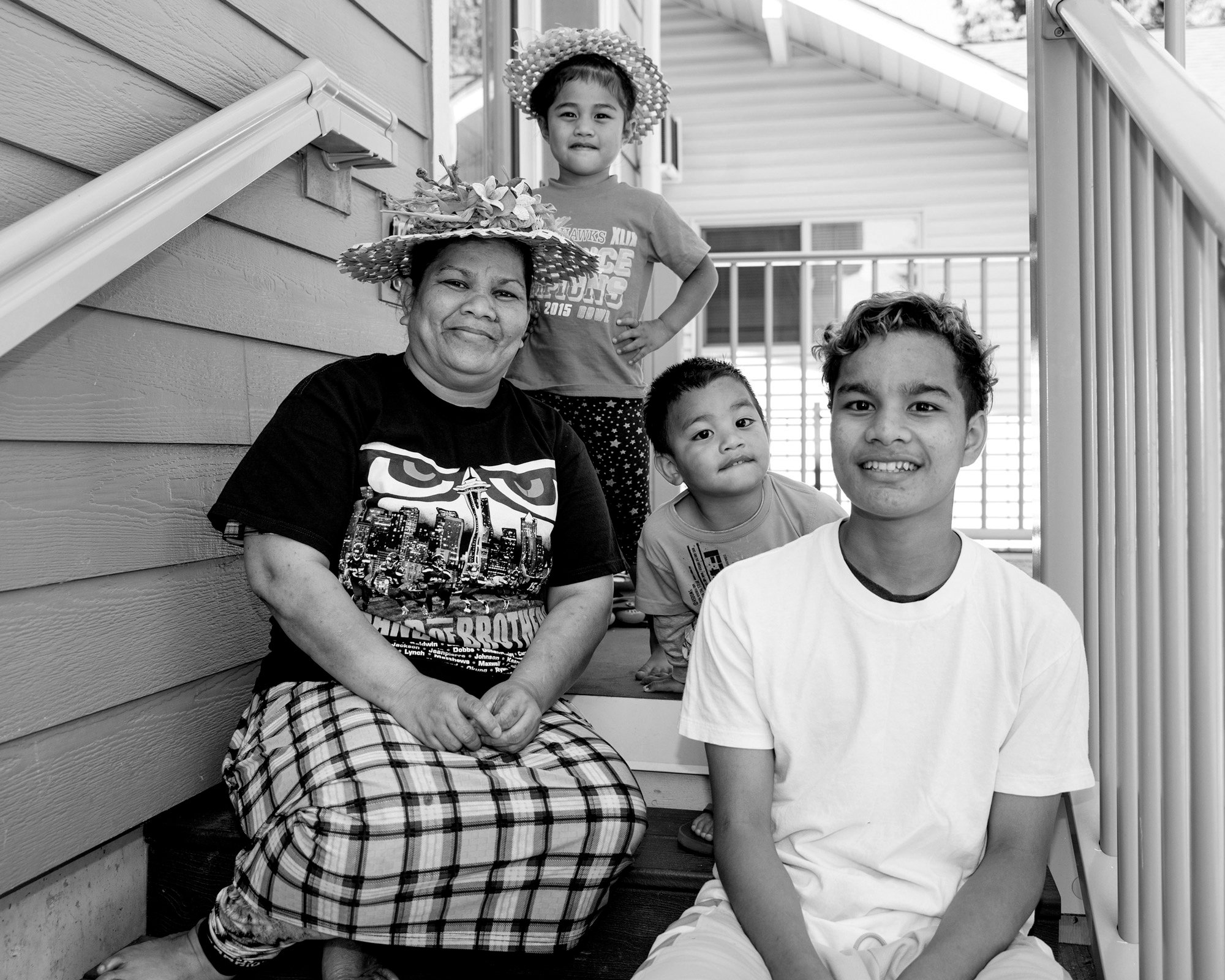
The Early Learning System is all of the interconnected people and organizations that enable families to care for their children and communities to care for their families.
It includes the early learning workforce, advocates, policy makers, funders, pediatricians, social workers, therapists, and staff at Tribal, regional, and state agencies, and many more.
Our system in Washington state has not been responsive enough. To eliminate inequities and improve outcomes for ALL communities, improvements should focus on the lived experience of children, families and those who care for them.
This starts by listening.
Local communities know what works, and what challenges stand in their way. The early learning system must be committed to co-design, strong collaboration, and shared accountability among ALL partners. To intentionally eliminate longstanding inequities and improve outcomes for communities furthest from opportunity, system improvements must be centered on the lived experience of children, families and those who care for them.
“Parents are the first teachers. Kids need to know their culture and their history. The first 5 years are the most fundamental and they are going to learn the most. So instill those core values to have a sense of worth in the most precious times of a child’s learning and development. It’s important for them to know their true history, that they came from Kings and Queens.”
– Parent
What Will Success Look Like?
To achieve Powerful Communities and a Responsive Early Learning System, we will need exceptional coordination among all communities and local and state partners to reach the specific goals that are backed by strong, strategic actions.
Goals
-
The early learning system is responsive to Black, Indigenous and People of Color. Communities of color co-design policy, strategy development and implementation, resulting in programs and services that are accountable to those communities for outcomes.
-
Robust funding and policies exist to support equitable outcomes for children, parents, caregivers and families.
-
Provide assistance to families, programs, services and supports to help families overcome the economic impacts of the pandemic, retain the early learning workforce, and rebuild sustainable business practices.
-
All early learning services and supports develop and embed continuous improvement mechanisms that allow for flexibility and change that benefits Black, Indigenous and People of Color and communities who have historically been and currently are underserved, and includes engagement of parents, caregivers and families in meaningful ways.
-
Local communities have power to articulate their needs, their assets, their hopes – and have an equitable partnership with, and ability to influence, the increasingly responsive statewide system of practices, polices and decisions.
-
Strengthen the foundational supports for the early learning system (i.e., data collection, financing, governance and coordinating structures, communication, facilities, etc.). Infrastructure will provide the resources for programs, services and supports to succeed.
Strategies
-
Implement a coordinated, comprehensive data collection system that is co-created with state and community partners, including work with Black, Indigenous and People of Color communities, that is available and accessible for planning and tracking progress.
Supports Goals A and F -
Develop holistic definitions of “school readiness” and “life readiness” and a definition/agreement of what is included in the “early learning system.”
Supports Goal F
-
Develop outcome metrics and a coordinated accountability structure that will be used for the monitoring and evaluation of the Coordination Plan.
Supports Goal F
-
Create formal opportunities (that include families and Leaders of Color) to co-design, co-develop and evaluate approaches to reduce racial disparities in early learning. Communities of Color co-design and co-develop programs that meet the needs in their communities.
Supports Goal D
-
Maximize the use of pandemic recovery resources. Provide supports in communities to meet critical needs of families, providers, and early learning programs.
Supports Goal C
-
Increase budget resources (local, state and federal) for early learning using an equitable allocation model. Increase the use of braided state and federal funds for early learning programs. Identify the need for rate increases across child care services and programs (including but not limited to subsidy rates).
Supports Goal C
-
Fund and support parent voice at all levels of decision making. Expand leadership pathways that include use of mentors and financial stipends for Black, Indigenous Parents of Color and communities who have historically been and are currently underserved.
Supports Goals A and E
-
Provide resources to support regional planning and coordinating structures across the state to ensure that every region has an equitable voice in making the early learning system responsive to families and providers in local communities, especially the most underserved communities.
Supports Goal E
-
Explore and refine the implementation of quality initiatives, evaluating how quality is measured, how compensation is tied to quality, how quality is experienced by children, families and providers. Assess the impacts of quality definitions and implementation of quality initiatives on Black, Indigenous and Communities of Color and underserved communities.
Supports Goals A, D, and E
-
Engage parents and the workforce to develop or update state regulations that are guided by equity and anti-racism frameworks.
Supports Goals A and F
-
Eliminate the “digital divide” for children and families, making access to technology for Black, Indigenous and People of Color, and communities who have historically been and are currently underserved, more equitable.
Supports Goals A, B, D, and F
At-A-Glance
Powerful Communities and a Responsive Early Learning System
Download a one-page summary that can provide quick access to the goals and strategies for this Outcome Area.
Explore Other Outcome Areas
-

Powerful Communities and a Responsive Early Learning System
-

Strong, Stable, Nurturing, Safe, and Supported Families
-

Positive Early Learning Experiences
-

A Strong and Supported Early Learning Workforce
-

Healthy Children & Families
